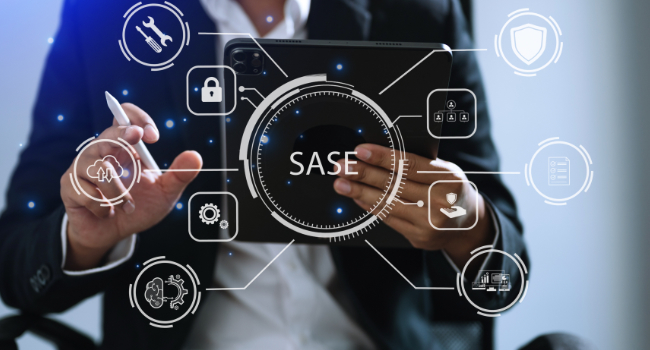
Importance and Need for Certification in SASE Adoption
In today’s dynamic landscape, the evolution of the digital economy serves as a compelling catalyst for organizations to revamp their networks, facilitate remote work, enhance cloud connectivity, reinforce cybersecurity, and maximize productivity. In particular, the shift to cloud computing and remote work has increased the need for secure access for any user from any device and any cloud to network resources. As a result, security and risk management leaders are adopting secure access service edge (SASE), which converges networking and security into a unified, cloud native platform that streamlines connectivity and access control across distributed environments.
The SASE market currently is one of the most promising in the communications industry. A recent Gartner report illustrates this point. In its 2024 CIO and Technology Executive Survey, Gartner found that 39% of the participating enterprise professionals said their organization had deployed or plans to deploy SASE within 24 months.
As enterprises embrace the adoption of SASE more widely to integrate networking and security, they need the confidence that the underlying components meet the highest industry standards for enterprise-grade performance, protection, and security. By requiring certified SASE solutions, enterprises gain the assurance that their SASE implementations will deliver expected capabilities.
How to Get SASE Certified?
As a global association of network, cloud, security, and technology providers powering the digital economy, MEF offers the industry’s first SASE certification program which validates reliable and consistent outcomes of SASE products and services, bolstering market confidence in cybersecurity solutions. MEF’s comprehensive SASE certification evaluates solutions against strict methodologies and test programs and includes software-defined wide area network (SD-WAN), security services edge (SSE) and zero-trust certifications. It also ensures compliance with MEF’s SD-WAN, SASE and Zero Trust Framework standards.
SASE certification improves interoperability between vendors, reduces integration friction, and promotes reliability of a SASE architecture. Based upon CyberRatings’ methodologies and test programs, MEF issues a rating on product and service effectiveness, performance, functionality and management of SD-WAN, SSE threat protection, and Zero Trust. The rigorous testing verifies security effectiveness and reduces risks while validating that the SASE services and solutions work as expected.
This third-party validation tests the SASE offering of service or technology providers and gives a report card and rating. The MEF certification registry will list the report card with attributes and additional details including vendor name, hardware model, software version, data tested and scorecard categories. MEF’s SASE certification accommodates both single-vendor and multivendor SASE providers by breaking the certification up into standalone certificates for SD-WAN, SSE and Zero Trust.
With SASE certification, enterprises will be able to select the best SASE technologies or managed services with the lates features and functionalities. Whether a single SASE solution or a disaggregated SASE solution, they are getting the best of breed security functions for their organization. Certification provides confidence that solutions and services meet industry standards and are continuously validated with an evolving test methodology that keeps up to date with the latest security threats. Certified SASE solutions will help adopters reduce the probability of productivity and other losses due to cyber threats, comply with regulatory mandates, and protect corporate reputations. As SASE adoption continues to grow, it is important for enterprises to choose certified SASE services and solutions.